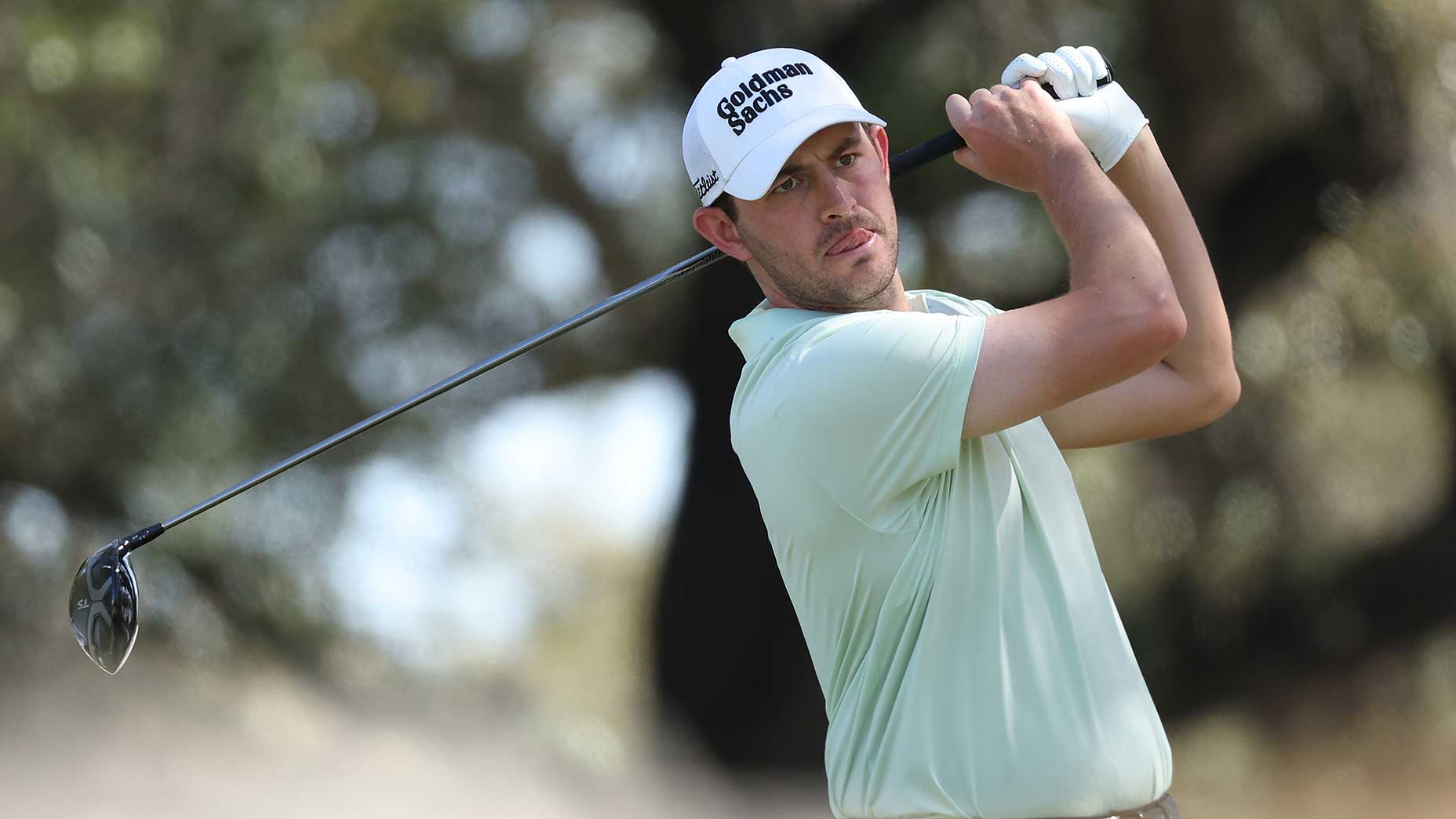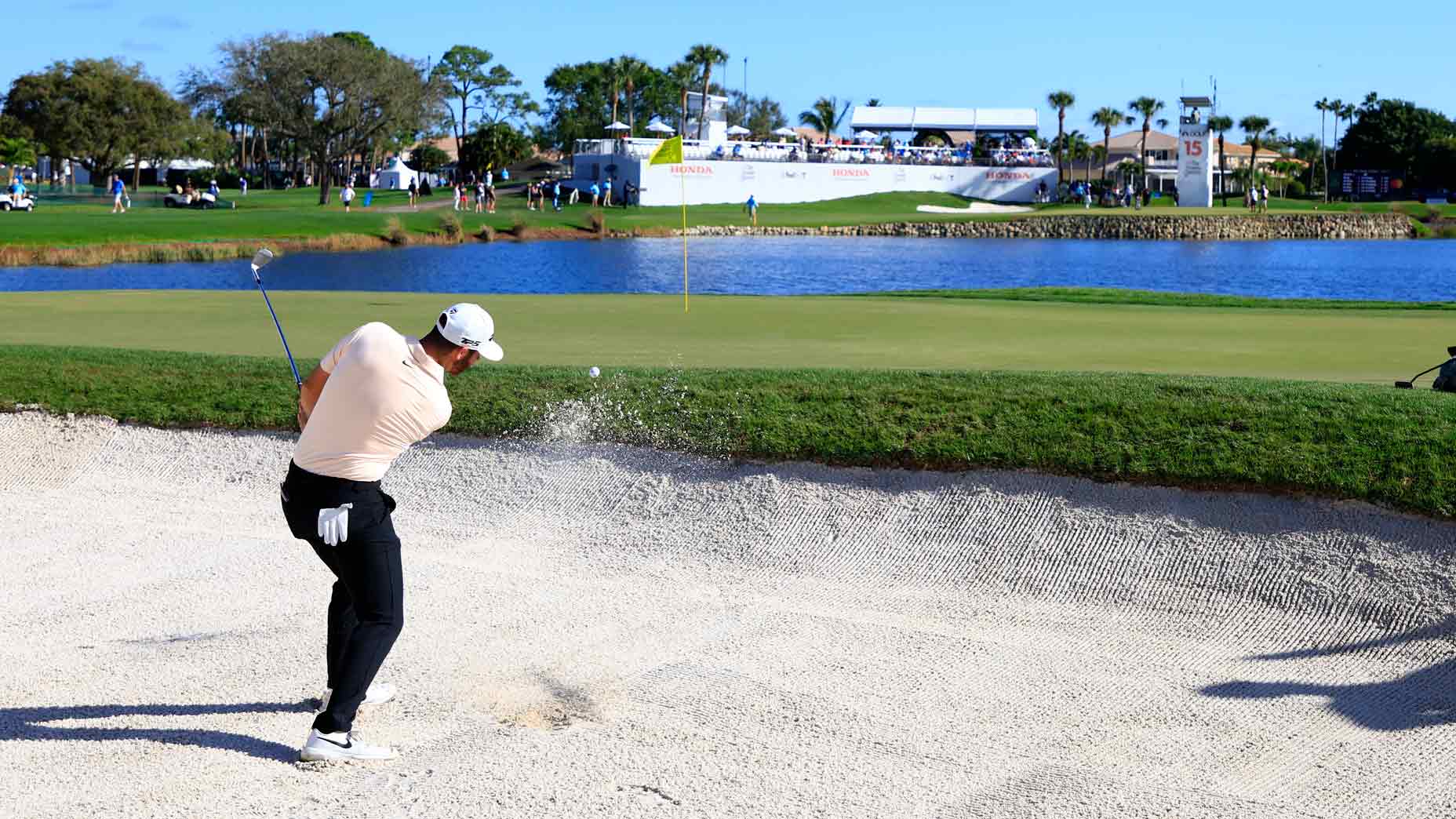
Patrick Cantlay watches a shot during the WGC-Dell Technologies Match Play.
Getty Images
Are today’s young Tour players better than ever? That’s what Patrick Cantlay was asked on Wednesday on Hilton Head Island, as he was preparing for this week’s RBC Heritage at Harbour Town Golf Links.
Cantlay, as he’s been wont to do, had a lengthy, thoughtful response.
He agreed that there seems to be a trend toward pros making more of an impact immediately after arriving on Tour. He referenced Jordan Spieth — who won the 2013 John Deere Classic at age 19, becoming the Tour’s youngest winner since 1931 — as the probable trendsetter. After his win at the John Deere, Spieth won five times (including two majors) during the 2014-15 season.
Other young players, although not as dominant as Spieth, have also had success early, like Collin Morikawa, who won two majors before he turned 25. Take the ages of the top-five players in the world right now, all ahead of Cantlay, for example: Scottie Scheffler (25), Morikawa (25), Jon Rahm (27), Viktor Hovland (24) and Cameron Smith (28).
“That’s a trend we’ve continued to see, that the best players in the world, in the past they used to be over 30 and now they seem to be around 30 or a little younger,” Cantlay said.
But why is this happening?
“That doesn’t surprise me with all the technology and more availability of good coaching and good feedback to younger players,” Cantlay said. “I mention all the time to friends of mine, when I was in high school I had no sense of how much my ball was spinning, how to hit the driver further, not realizing that spin and launch were the most important things to hitting the golf ball far. I just had a feeling that if I swung harder it would go farther, but that’s not necessarily the case.
“And so there’s kids that are growing up with Trackman from 8, 9, 10, 11, 12 years old,” he continued. “So by the time they’re 16, 17 and they’re developing into really good junior players, they’re dialed in on all of that stuff and they have been working on launching it at 2,000 spin at 13 or 14 to get it to go as far as possible.”
Cantlay, 30, stopped short of saying players coming out now have an advantage, but instead said they play a different game.
“They swing hard, they hit it high and straight and they go for almost every flag stick,” he said. “And I would say when I was growing up it was slightly different. It was maybe, there was some guys that were on that model, but a lot of guys were play to the edge of the dogleg, old school, you know, like when DL3 (Davis Love III) won here five times. Play to the edge of the dogleg … putt up the hill to the corners. So I would say that’s been the biggest difference and what I would attribute to maybe a younger generation playing better quicker.”
Cantlay also said he believes this trend means careers will be shorter.
“[Davis Love III], I don’t know how many years this is for him on Tour, but it’s got to be near 30 and he’s still playing this week past 50. I would be surprised if we saw a lot of kids of this generation do that into their 50s,” Cantlay said. “The competition seems more fierce and so it takes more out of guys, more out of their bodies, more out of their preparation, more from a time perspective, and so the careers get hotter and shorter. And I think you’re seeing that in all sports. And there always will be exceptions, Tiger still being able to win majors in his 40s. [Tom] Brady being able to win Super Bowls in his 40s. So there will always be exceptions, but I think in general, as a rule, careers will be shorter and guys will play better younger.”
Cantlay’s off to a strong start at Harbour Town. He shot a five-under 66 in the first round and is two back of early leader Cameron Young, who shot 63. Cantlay’s second round begins at 1:07 p.m. on Friday.










